AudioCulture
The noisy library of New Zealand music
Te pātaka korihi o ngā puoro o Aotearoa
Naked Spots Dance
Through two fascinating EPs (Certain Ways, New), a 1983 album called Falling, and nearly four years as performers, the Wellington post-punk act accumulated a substantial body of challenging, but not inaccessible work.
At their best on ‘New Meaning’ and ‘Governed By You’, Naked Spots Dance’s fresh and thoughtful post-punk sound veered from fragile to funky. Regulars at Billy d’Club, The Last Resort, and Cosgroves in Wellington in 1981, 1982 and 1983, the cutting edge act soon widened their scope to Christchurch, Auckland and the massive Sweetwaters festival at Pukekawa.
And that name? Naked Spots Dance was one of the tranche of prog-ish art rock monikers that set Wellington’s Terrace Scene groups apart.
“If you concentrate on anything really hard you realise you don’t actually see what is there. It’s like the way pictures are made up of millions of little spots. Your sight is made up of many little spots, little cells. That’s why naked spots dance,” Stephen Norris explained to In Touch in late 1981.
New Meaning
Assembling at secondary school in 1979 with Jeff Smith (later the bassist for The Newmatics) as their original drummer, Naked Spots Dance made their public debut with The Androidss in Cuba Mall in June, 1980. By then, the line-up was Norris, Walker and Phil Harfield (drums) with Jennifer Ward-Lealand singing.
When Wellington’s rising post-punk scene announced its arrival in style at Rockfest with a lengthy bill at the new all ages venue Billy d’Club in Vivian Street on Queen’s Birthday Weekend (June 1-3) 1980, Naked Spots Dance were front and centre alongside Shoes This High, The Wallsockets, Domestic Blitz, Westown Quintet, Life In The Fridge Exists (LIFE), Unknown Wrecks and Negative Theatre.
Shows at Thistle Hall further down Cuba Street and the Shoes This High farewell in July 1980 followed.
As one of four Windy City post-punk groups on the landmark **** (Four Stars) compilation LP (released in a limited run by Sausage Records in late 1980), Naked Spots Dance contributed four songs to the track listing, including the praised ‘Crescendo/ Circle Moon’.
1981 found the rising quartet at all ages venue The Last Resort over three nights in late March with Janet & John, The Wallsockets and Condemned Sector. Naked Spots Dance were back at the renamed Resort with The Gordons in late April, returning the following day to play the first of three nights with Auckland’s Blam Blam Blam and The Ainsworths.
In July, Naked Spots Dance headlined at Rock Theatre before joining the Wellingtonzone line-up at Wellington Town Hall on the 24th, although none of their songs made the subsequent live LP.
Christchurch’s DB Gladstone beckoned in late August putting Naked Spots Dance onstage in a city with its own vibrant post-punk scene. Then it was into Marmalade Studios with Chris Cullinane to capture the four songs that would make up their debut EP, Certain Ways. Shows in Wellington at Rawa House followed on September 25 & 26, as did a memorable performance at Porirua Mental Hospital.
On December 26 1981, Naked Spots Dance linked up with Riot 111 and The Spines for the Boxing Day Ball at Rock Theatre.
In Touch editor Gary Steel summed up Naked Spots Dance erratic progress that year for New Zealand Rolling Stone in early 1982: “1981 fast turned into a slumber for NSD. Other commitments deprived them of Leyland [sic] and then Harfield. They carried on with new drummer Matthew Fisher.
“When [Stephen] Norris calls the band 'post-modernist, psychedelic, futuristic, intellectual – we don’t fit in that well,' he may be joking, but he’s hitting their current schizoid dilemma on the head. It’s a crying shame that the lack of a clear direction and commitment to the band ideal is depriving them of their deserving world-class standing.”
Their debut EP, Certain Ways, arrived in January 1982 as part of a tide of indie releases nationwide that put new and challenging local sounds into local record collections.
Their debut EP, Certain Ways, arrived in January 1982 as part of a tide of indie releases nationwide that put new and challenging local sounds into local record collections. Housed in a white cover with three small black and white photographs, the four-song EP promised much for future recordings.
Naked Spots Dance featured strongly in the New Zealand heavy issue of In Touch dated December 1981/ January 1982, where they gave their most comprehensive interview yet to Gary Steel.
Referring to the group’s early Thistle Hall shows, Steel observed: “They already had 100% original material and a strength that couldn’t be denied. Their sound was always very Naked Spots Dance; a brooding, sulky, atmospheric, menacing, often slow and pompous sounding (beautiful) noise.”
The addition of Matthew Fisher (formerly the bassist in Wellington ska group The Preservatives) on drums brought a harder, sharper and more physical sound that put a totally different accent on the group’s music than Harfield’s rolling and rounded style.
“While Matthew is generally well-schooled in music, having studied it at school and university, neither Kate or Stephen read or write music.”
Musical tastes varied. Fisher was into jazz, classical, reggae, and more commercial music, while Walker liked “noisy, obscure sounds”. Norris favoured Joy Division, Pere Ubu and also Henry Cow, Robert Wyatt and even Michael Jackson’s Off The Wall.
And politics? “Politically we are against injustice, intolerance and violence. I think that our society is not right. It doesn’t suit people. It’s oppressive that society can do something like make drugs illegal. This is an example of where society doesn’t fit people because logically that’s not just,” Norris stated.
“Bands without a political view ignore their responsibility, and maintain the status quo,” Kate Walker said in a later interview.
Governed By You
Late February shows in Auckland’s Reverb Room and late April dates at Wellington’s Terminus were chased by four nights and an afternoon at the Rumba Bar in Auckland in mid-May before Katherine McRae joined the band. They’d been without a vocalist since Ward-Lealand left in mid-1981 to concentrate on acting.
Reviewer Daisy Cheyne caught the new line-up alongside Primitive Art Group and The Spines at Wellington’s Cosgroves on July 30 and noted McRae’s strong voice and relaxed stage presence.
“This combined with an up tempo trend among the newer songs makes the band a lot more immediately accessible than in the past.
“Their sound retains its characteristic fragility, but its once earnest plod has given way to a sort of thoughtful shuffle. Despite obvious difficulties with the onstage sound everything stayed pretty tight with Kate Walker’s bass work standing out, and odd synth touches doing a lot to add colour. By the time they wound up it was SRO [standing room only].”
When Bill Direen’s Urbs arrived in Wellington for shows in mid-August 1982, Naked Spot Spots Dance was the support group, a role they’d also play for touring The Fall at Victoria University that month. October kept NSD busy with performances at Clyde Quay and Cosgroves then it was back to Auckland for three nights and an afternoon at Windsor Castle in mid-November.
Peter White sat down with the group in late 1982 for a RipItUp feature that focused on second EP, New, recorded in August 1982 at Marmalade studios.
Never the most forthcoming of bands, Naked Spots Dance surprised with a dissection of the EP title track, ‘New’. At the end of the song there’s a groove that NSD intended to fade out quickly, but instead they dubbed a tape of Fisher’s on.
“I did the tape at university as part of my music course there. I carted a tape recorder around town and collected a whole lot of sounds, lifts and trains and things. I spent about fifty hours putting it on open reel and then splicing it up rhythmically using space on a length of tape to equal a certain amount of time.
“We’d done all the recording and shoved it on a couple of spare tracks. When we were playing the music back, Ian started the tape and it seemed to fit in so well.” Ian being producer Ian Morris at Marmalade Studios, who’d been sent demos in advance to hip him to the band’s sound.
The more settled line-up for New showed in its assured sound and overall cohesion.
Kate Walker added further context. “‘New’ is about the early white settlers, colonials who round a bay to see what they think is new land, but its really old land that had been settled a long time ago. Then its about the conflict leading into the breakdown with the tape coming in with it’s crashy, city noises.”
While Certain Ways was conceived and recorded with the group constantly changing, the more settled line-up for New showed in its assured sound and overall cohesion. Katherine McRae soon departed. Her replacement was Fran Walsh, formerly of The Wallsockets.
Early December shows at Cosgroves with Dunedin’s The Stones rounded out a busy year that included Kate Walker distributing Flying Nun Records in Wellington and the band providing the music for a university production of A Midsummer Night’s Dream.
Falling
Naked Spots Dance headed north again in late January with new vocalist Fran Walsh for an indifferent performance at Sweetwaters, following three early month dates with Fetus Productions and Fishschool at the Rumba Bar in Auckland.
On home turf, NSD joined the touring Nocturnal Projections at Victoria University on March 5, before travelling to the South Island’s West Coast for the Punakaiki Valley Festival in early April that brought together many of the nation’s best indie groups.
RipItUp’s reviewer wasn’t impressed. “Naked Spots Dance tried hard to be oh-so-fearsome, but their dour epics invoked a mood of despair among those who knew better. They lacked variety in their material and the tapes were a grating and superfluous touch.”
Auckland called again for three mid-month shows at the Rumba Bar with Squirm. This time it was RipItUp’s Jewel Sanyo doing the interpreting:
“Flawed this night by loudness and the absence of vocalist Fran Walsh, Naked Spots Dance are still the most original and contemporary band on the New Zealand circuit. Their seamless sensual songs are composed of instinctive, economic, rhythmic structures. All extraneous matter is left out. The shimmering skeletal forms shifts and alters, its sort of like listening to a mirage – if beauty is consciousness, NSD is the heightened state of it.
“Some songs over extended into jams detracting from Naked Spots ability to surprise,” Sanyo believed, before singling out highpoints’ ‘Jack In The Box’, ‘About But Not Or’ and ‘Underwater Data’ with guest howler Kevin Hawkins contributing.
They saw out June and welcomed in July at Wellington’s Cricketers ahead of a mid-month appearance at Cosgroves, their second home. The group returned for consecutive nights in the middle of August. That month they also recorded 10-song debut LP Falling with Chris Cullinane at Marmalade. The title track was captured by David Ginnane.
Ahead of an evening at Victoria University’s Union Hall, the band sat down for a sketchy interview in student newspaper Salient. Regular shows at Cosgroves last year had built up an audience for them in the city, Naked Spots Dance told interviewer Mark Cubey.
On September 10, 1983, Naked Spots Dance dusted down the glad rags for Ritz2 at Wellington’s Majestic Theatre. On the bill that night were Jungle Mice, The Verlaines and Miltown Stowaways.
“Naked Spots Dance were one of the first heavyweight acts to appear,” RipItUp’s David Taylor wrote. “They’ve lost the uncertainty that has dogged them in the past and presented challenging, hard and rhythmic songs. Accompanied by slides, there’s was a strong performance… some nights you just don’t want to go home.”
A week later the quartet stood up at Rock Against Racism at Victoria University on the 17th before joining the Peace Festival at Pipitea Marae in Wellington the following weekend. There were two dates with the reformed Gordons and Vietnam in Wellington in early October before Naked Spots Dance revisited Christchurch’s DB Gladstone on the 28th and 29th.
Falling was released through Jayrem Records, who’d taken over from Flying Nun Records in distributing the band. Reviews were lukewarm and there was a feeling the group’s time had past. A second album, recorded in late 1983 at Marmalade Studios, remains unreleased. Naked Spots Dance split in early 1984.
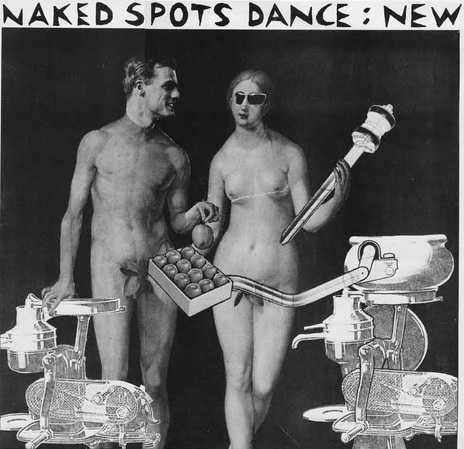
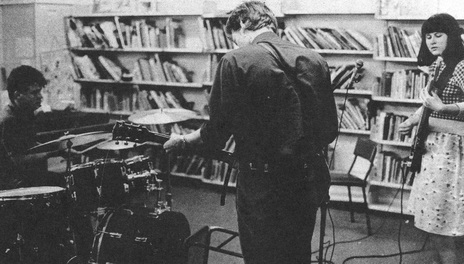
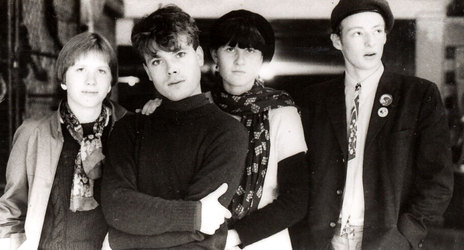
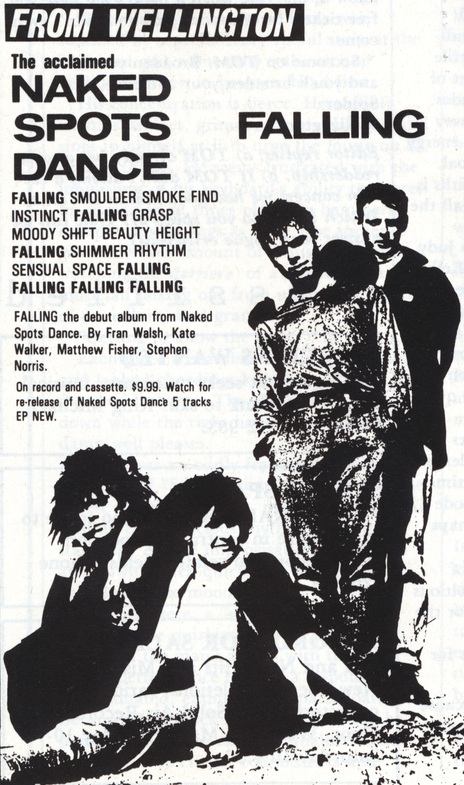
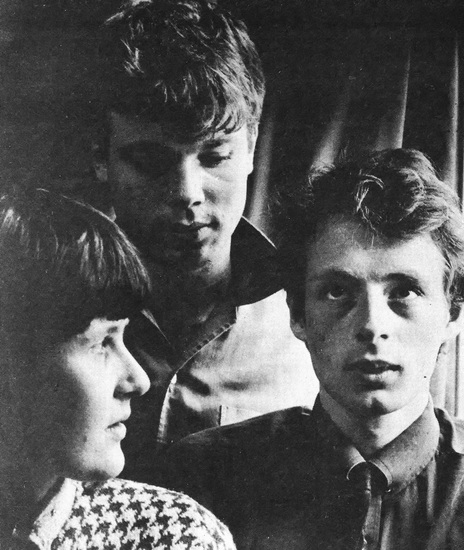
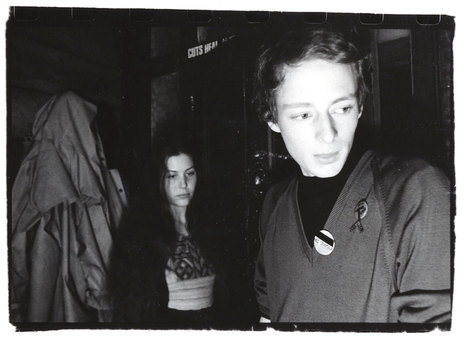
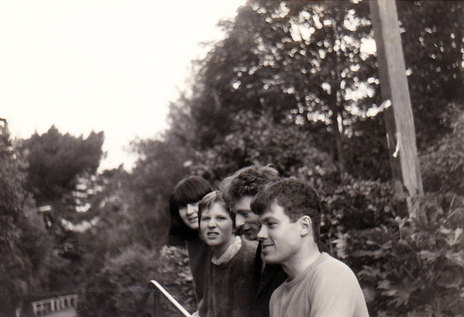
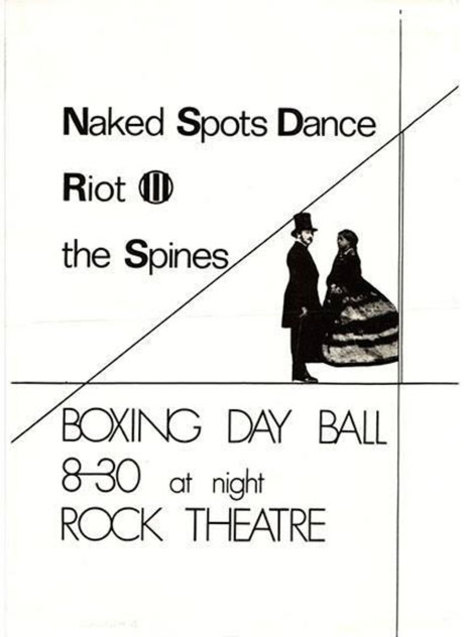
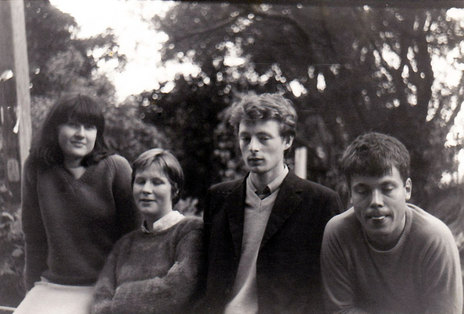
The Rumba Bar and The Reverb Room
The Wellington Terrace Scene 1979-81
Sausage Records
The Terrace Scene: Wellington Punk and Post-Punk, 1979 – 1981
Gary Steel feature on Naked Spots Dance, which first appeared in Rolling Stone in 1982
Stephen told In Touch magazine in 1982 that he liked Pere Ubu, Henry Cow, Robert Wyatt and Michael Jackson.
Fran Walsh would later marry Peter Jackson, and has won three Oscars, out of a total of seven nominations for her work.
Stephen Norris - guitar, vocals
Kate Walker - bass
Phil Harfield
Matthew Fisher - drums
Katherine McRae - vocals
Fran Walsh - vocals
Jennifer Ward-Lealand - vocals
Visit our sister site
NZ On ScreenMade with funding from
NZ On Air